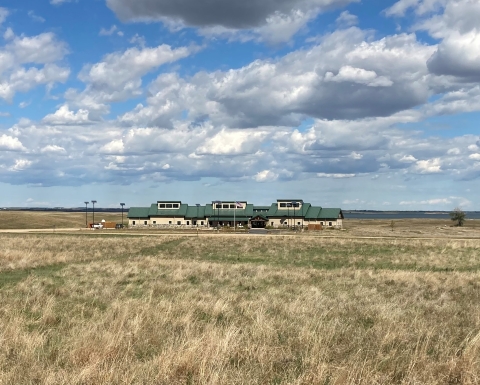Lake Ilo National Wildlife Refuge was established in 1939 by Franklin D. Roosevelt as a breeding ground for migratory birds and other wildlife. The Refuge provides fish and wildlife-oriented recreational opportunities, conserves endangered species, and protects cultural and natural resources.
Visit Us
National wildlife refuges are wonderful places to connect with the natural world. We invite you to enjoy wildlife observation, photography, hiking, and fishing opportunities on the Refuge.
Lake Ilo Park is located on the north shore of Lake Ilo and provides visitors with picnic tables, charcoal grills, litter receptacles, and a restroom.
Location and Contact Information
About Us
Explore the history behind Lake Ilo National Wildlife Refuge from the first peoples’ use of the area, to dam construction, and its modern use as fish and wildlife habitat.
What We Do
The primary purpose of Lake Ilo National Wildlife Refuge is to provide nesting and brood-rearing habitat for waterfowl. However, Refuge staff use a variety of habitat management techniques to maintain, enhance, or recover habitat for all wildlife on the Refuge. Refuge staff carefully use management tools such as livestock grazing, prescribed burning, noxious weed control, mowing, seeding, and water management. Sometimes, sensitive areas are closed to the public so that the land can recover more quickly.
Our Organization
The U.S. Fish and Wildlife Service manages an unparalleled network of public lands and waters called the National Wildlife Refuge System. With over 565 refuges and 38 wetland management districts spanning the country, this system protects iconic species and provides some of the best wildlife viewing opportunities on Earth.
Our Species
The Refuge has 4,034 acres of native prairie, planted grasslands, and wetland habitat. These habitats provide a home for 227 bird, 36 mammal, 6 reptile, 3 amphibian, and 11 fish species.



